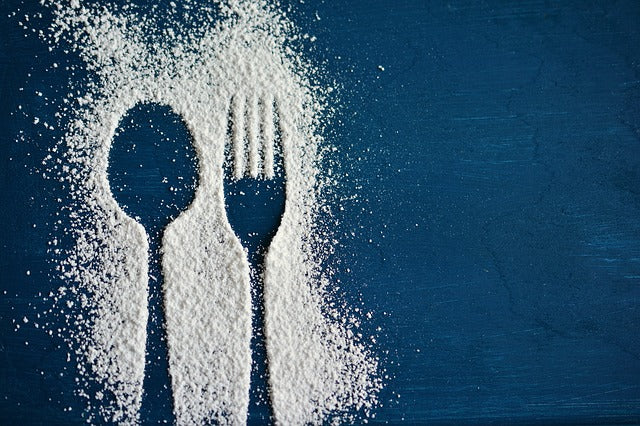Sugar Spikes
June 21, 2011 3 min read

Sugar is not the enemy - however, sugar spikes are. Whole foods contain sugar but also fiber that slows down the release of sugar into the blood and does not tend to spike blood sugar. The worst offenders are soft drinks and fruit juice and any food high in sugar. Food labels list sugar in grams.
How many grams are in one teaspoon? 4 grams = 1 teaspoon. Read food labels to determine how much sugar is in a product. Sweetened yogurts for instance and other foods you thought were healthy are often piled with sugar and are really more of a desert.
Soft drinks and fruit juice range from 25 to 40 grams of sugar, which translates to 6 to 10 teaspoons of sugar.
Below are a few common fruits and fruit juices just to give you an idea of fruit sugar content. Lean on vegetables and minimize fruits – all fruits are fine in moderation.
Berries tend to be a great choice since they tend to be low in sugar and loaded with healthy antioxidants. For high-sugar fruits such as banana’s and mangos, limit to ½ cup or a medium banana. Below are a few fruits as examples of carbohydrate and sugar content.
| Carbohydrate | Fiber | Sugar | |
| Banana – 1 medium | 27 | 3 | 14 |
| Apple ½ cup | 9 | 1.5 | 7 |
| Blue berries ½ cup | 11 | 2 | 7 |
| Mango ½ cup | 14 | 1.5 | 12 |
| Strawberries ½ cup halved | 6 | 1.5 | 3.5 |
| Orange juice raw 8 oz | 26 | 0 | 21 |
| Apple juice 8 oz | 28 | 0 | 24 |
Foods we tend to think are healthy:
Fruit smoothies – often are 12 ounces with whole fruit and fruit juice – tons of sugar!
Instead: 1 cup of berries (organic frozen), 8 ounces of water and a good protein powder – I especially like Designs for Health pea protein powder – tastes great and adds 17 grams of easily digestible protein.
Diet sodas – no sugar or calories but plenty of chemicals
Just say no to diet sodas – they are horrible for digestive problems
Drink water and herbal teas – yeah, I know doesn’t sound great but neither does diabetes nor unwanted weight gain. Over the years I have dropped all sugary drinks including fruit juice with one exception – fresh squeezed orange juice (1/2 cup) a few mornings a week with my morning soft boiled egg and gluten free toast.
FREE Public Event
The Heat Is ON!
Hormones, Bone and Heart Health
with Dr. Lani Simpson and Dr. Sarah Ferguson
Ed Robert’s Campus 3075 Adeline, Berkeley (Fantastic new facility!)
October 6th & October 20th
6:00 PM – 8:15 PM
No Registration Required
Good Carbs, Bad Carbs
There are basically two types of carbs:
simple (bad) carbs include white bread, white rice, chips, cookies, candy, soda, and pretty much every type of junk food
complex (good) carbs – think WHOLE foods! - include steel cut oatmeal, beans, brown rice, quinoa, carrots, greens, sweet potatoes and whole grains.
While you may not want to eliminate simple carbs completely, you most definitely want to limit your intake of simple carbs and get most of your carb intake from complex, whole food carbs.
FIBER is one of the few nutrients found on your food label like you actually want to be high. A few grams per serving is a good thing. Higher fiber indicates you are most likely eating a complex carb. Fiber slows down the sugar from spiking our bloodstream.
Consider the following tips.
- The less foods you purchase with labels the better – no label means it is a whole food!
- Shop the periphery of a store where all the fresh foods are stored
- Consider a sensible cleanse – it takes 3 weeks to break habits. Consider the cleanse program I run – it is an excellent program – I use the products myself!
- Diet and non-diet sodas are nutrient negative – they rob the body of nutrients and cause havoc with digestion and weight gain.
Subscribe
Sign up to get the latest on sales, new releases and more …

